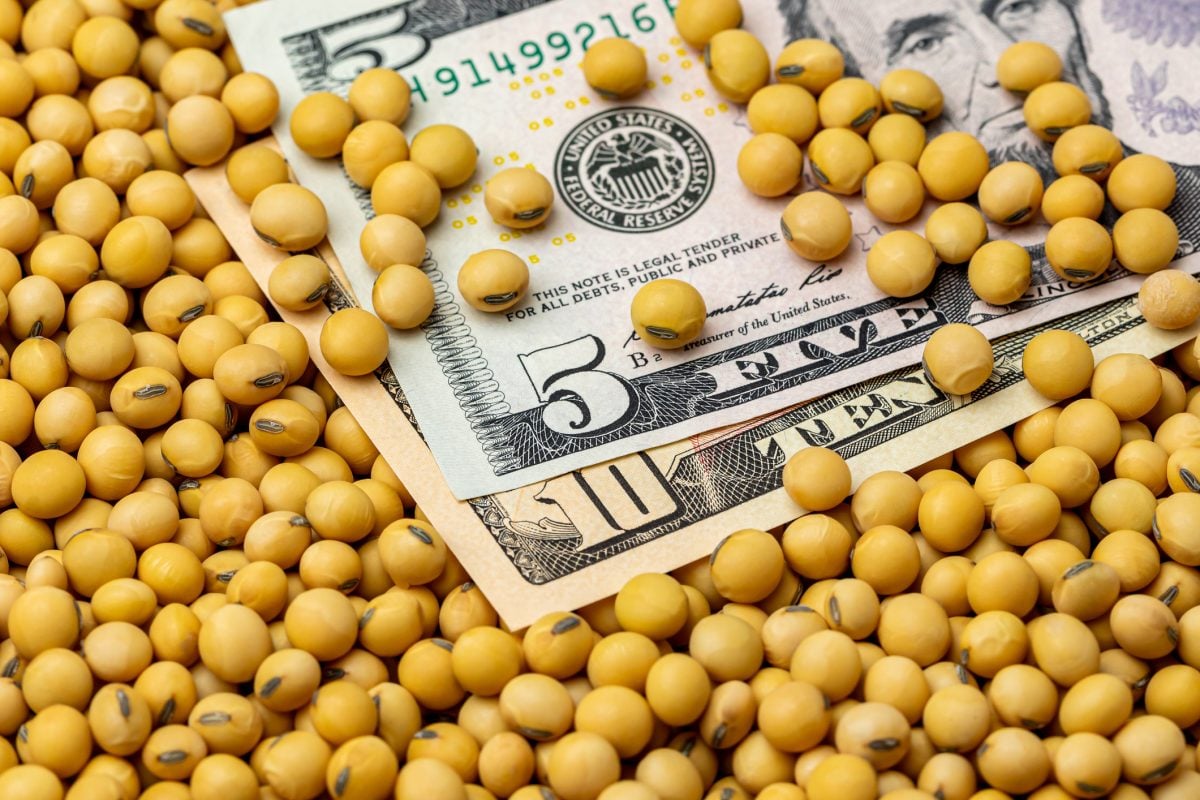MarketsFarm — The U.S. Department of Agriculture (USDA) on Thursday released its monthly world agriculture supply/demand estimates (WASDE) — the first to show estimates for the 2022-23 marketing year — and markets reacted quickly.
Ryan Ettner, a broker for Allendale Inc. at McHenry, Ill., said that while figures for corn and soybeans were in line with trade expectations, wheat estimates were lower than expected.
“The demand for U.S. wheat was fairly poor… but they cut the supply even more than that to generate a surprisingly supportive report,” he said.
Read Also

U.S. grains: Soybean futures hover near 15-month high after China buys U.S. cargoes
Chicago Board of Trade soybean futures hovered near a 15-month high on Wednesday after trade sources said China made its first purchases from the autumn U.S. harvest ahead of a summit between leaders Donald Trump and Xi Jinping.
USDA predicted 47.4 million acres of wheat to be planted in the U.S. this year, a 700,000-acre increase from 2021. However, domestic ending stocks are expected to decline 39 million bushels to 615 million. World ending stocks are projected to decline five per cent to 267 million tonnes in 2022-23, the lowest level in six years.
Adding in extreme soil moisture conditions in wheat-growing areas of the U.S., prices which were already on the rise during the week spiked at least 30 cents per bushel higher on Thursday (all figures US$).
Seeded corn area is expected to decline by 3.9 million acres from last year to 89.5 million in 2022, USDA said. Domestic ending stocks are expected to tighten by only 80 million bushels to 1.36 billion in 2022-23 largely due to a 655 million bushel drop in production to 14.46 billion. World ending stocks are projected to be at 305.13 million tonnes, lower than the 309.39 million from last year.
For soybeans, 91 million acres are expected to be planted in the U.S., 3.8 million more than in 2021, with ending stocks rising 75 million bushels to 310 million. Production increased by 205 million bushels to 4.64 billion. World ending stocks are projected to be 99.6 million tonnes, compared to 85.24 million for 2021-22.
Over the past week, old-crop corn prices have stayed steady while old-crop soybeans were lower. Ettner does not expect any sharp changes in those prices after the report.
“(They were) more in line with the numbers that (the trade expected). (Their numbers) were neutral to just a fraction bearish. I wouldn’t be surprised if (Thursday) ended up very close to unchanged, especially in the old crop year.”
Weather, Ettner added, will be the largest factor on the markets moving forward, anticipating what he considers to be the best 10-day planting stretch this spring. He also expects a “general grind lower” in prices for the next week.
“Low volume, nothing too exciting, just a slow grind lower.”
— Adam Peleshaty reports for MarketsFarm from Stonewall, Man.












